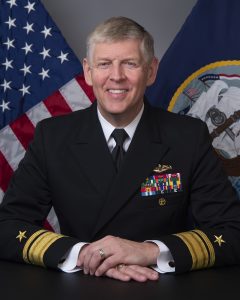Office of Naval Research (ONR)

Rear Adm. Lorin C. Selby, Chief of Naval Research[1]
Rear Adm. Lorin C. Selby serves as the Chief of Naval Research, a role in which he is responsible for the Office of Naval Research (ONR).[1]
The Office of Naval Research (ONR) was established in 1946 and is located in Arlington, VA. It is an executive branch agency within the DOD that provides technical advice to the Chief of Naval Operations (CNO) and the Secretary of the Navy (SECNAV). ONR reports to SECNAV through the Assistant Secretary of the Navy for Research, Development and Acquisition (ASN(RDA)) and is led by the Chief of Naval Research, who oversees a portfolio of short- and long-term investments.[2]
ONR’s research activities are divided into two research directorates, research (discovery and invention) and technology, which manage and coordinate the five S&T departments:
- Command, Control, Computing, Communications, Cyber, Intelligence, Surveillance, Reconnaissance, and Targeting (C5ISRT) (Code 31)
- Ocean Battlespace Sensing (Code 32)
- Sea Warfare and Weapons (Code 33)
- Warfighter Performance (Code 34)
- Naval Air Warfare and Weapons (Code 35)[2]
At the department level, ONR investigates, researches and supports the various technology areas included in the Naval Research and Development Framework, including:
- Augmented Warfighter
- Integrated and Distributed Forces
- Operational Endurance
- Sensing and Sense-Making
- Scalable Lethality[3]
The Naval Research Enterprise (NRE) Addendum to the Framework outlines six integrated research portfolios that support naval warfighting domains:
- Amphibious Expeditionary Maneuver
- Information, Cyber and Spectrum Superiority
- Mission Capable, Persistent & Survivable Sea Platforms
- Aviation, Force Projection & Integrated Defense
- Undersea Battlespace and Maritime Domain Access
- Warfighter Supremacy[3]
ONR manages and funds basic and applied science and advanced technology development through the utilization of grants and contracts with various partners in academia, industry and government.[4]
Updated by Kristin Stiner, November 2023

Comments are closed.